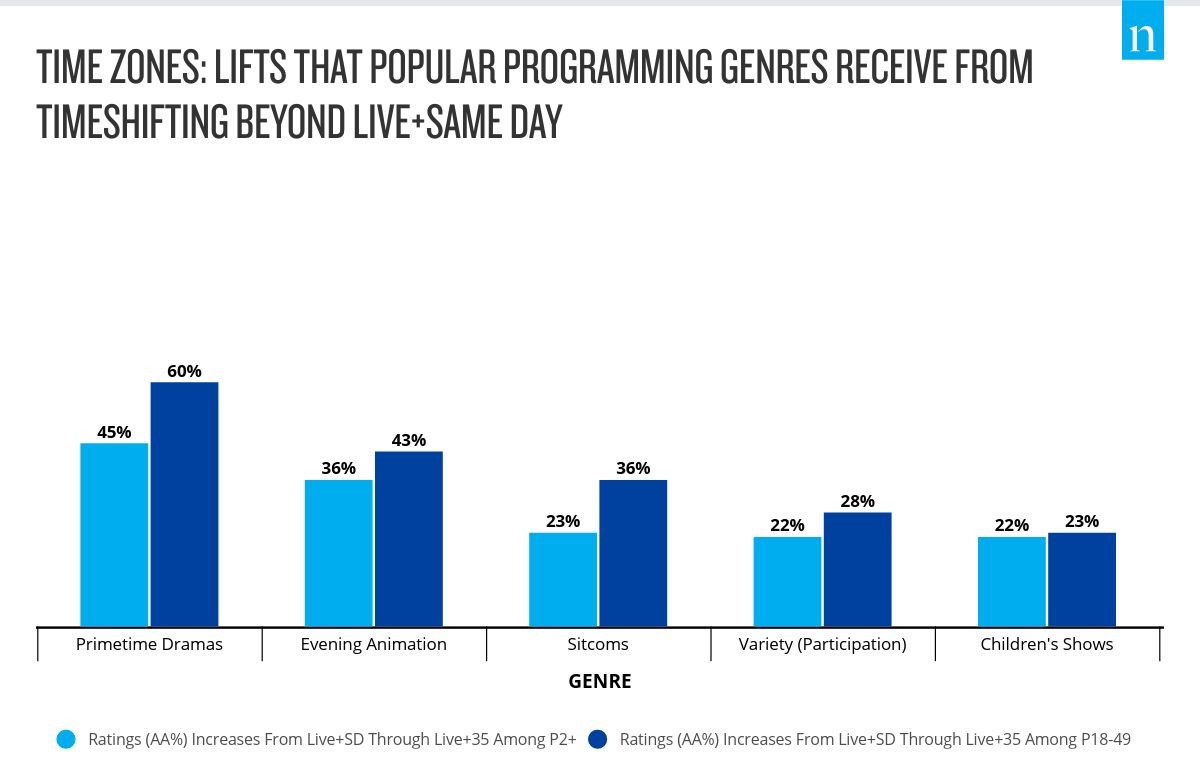Nielsen: Delayed Viewing Gives Significant Bump in Ratings
NEW YORK—When “M*A*S*H” aired its final episode, a reported 106 million people tuned in to watch it live. Those sort of numbers are highly unlikely to ever be repeated again, but according to a new Nielsen report, just because viewers aren’t watching a show at its initial airing doesn’t mean it isn’t generating strong numbers.
Live sports remains one of the remaining programming options that retains a high level of viewership at airing, but with DVR capabilities abound, viewers for genres like primetime dramas or sitcoms often wait to watch at a time convenient for them.
“When the media industry … considers defining a hit in measurement terms, it’s crucial that the full viewing audience is considered,” Nielsen wrote in its summary.
According to Nielsen’s report, in the first quarter of 2019, U.S. adults 18 and over spent nearly four hours each week watching delayed, or time-shifted, viewing. When they would turn in could range from slightly delayed on the same day to more than seven days after the initial airing.

Looking closely at the beginning part of the 2018 television season (Oct. 1-Dec. 30, 2018), traditional viewing beyond live or same day out to 35 days provided a 10% lift in viewing for programs, an average of 2.7 million more viewers. For viewers between the ages of 18-49, there is a 14% rise (1.1 million viewers) over the same period.
The genre of the particular program does impact the numbers as well. During that same period, ratings increased 40% for viewing up to 35 days after going live for primetime dramas, 65% higher for the 18-49 age range.
Nielsen concludes that this data can help marketers make sure they reach their full potential audience.
Get the TV Tech Newsletter
The professional video industry's #1 source for news, trends and product and tech information. Sign up below.
